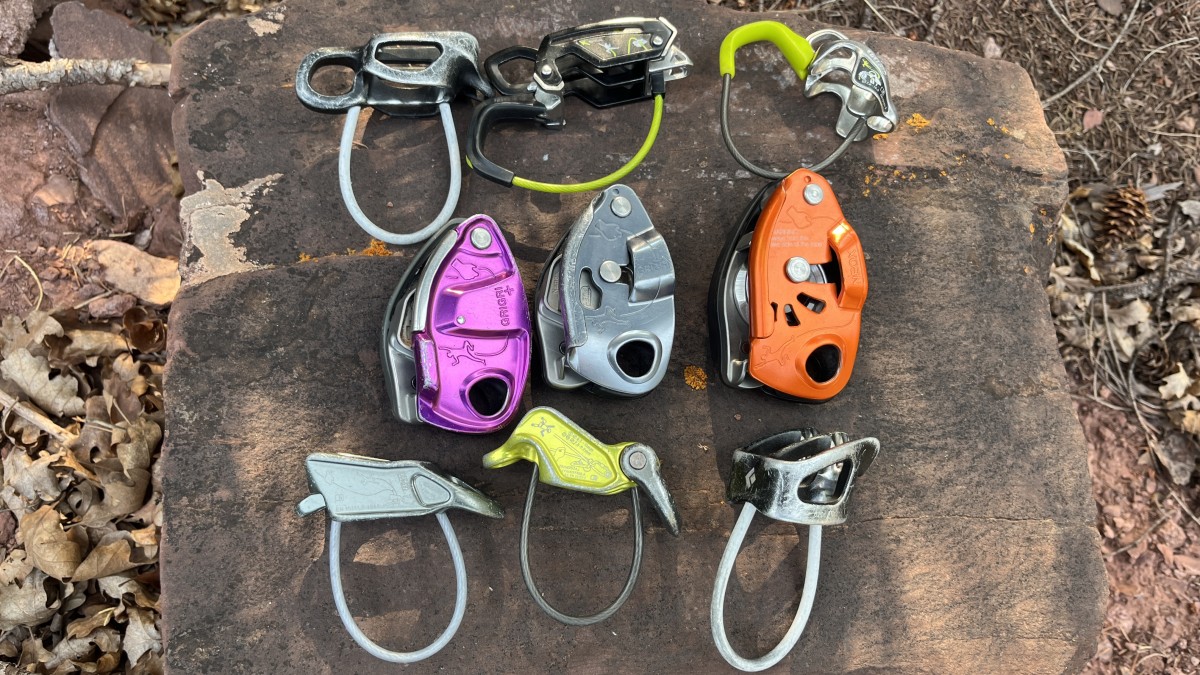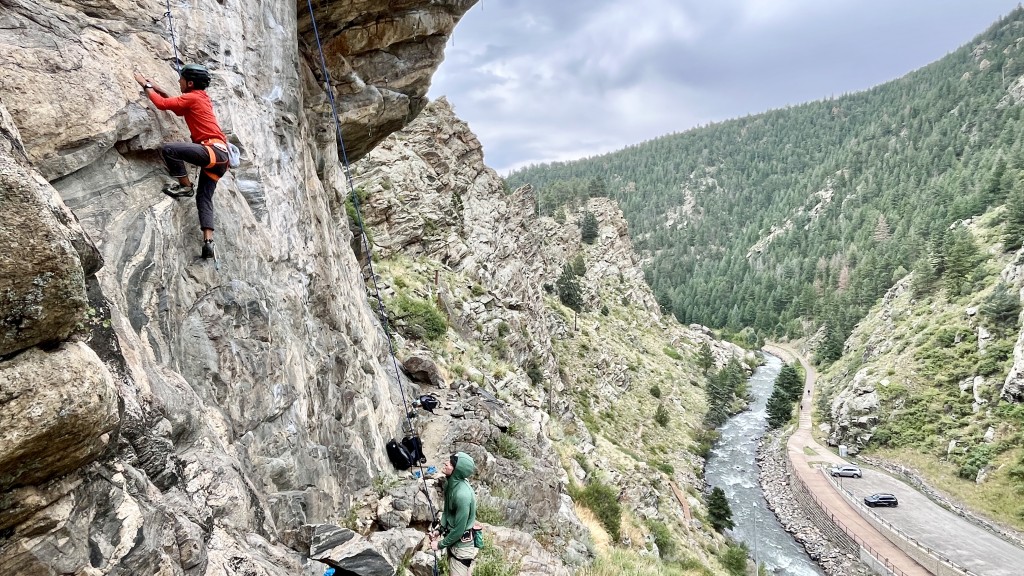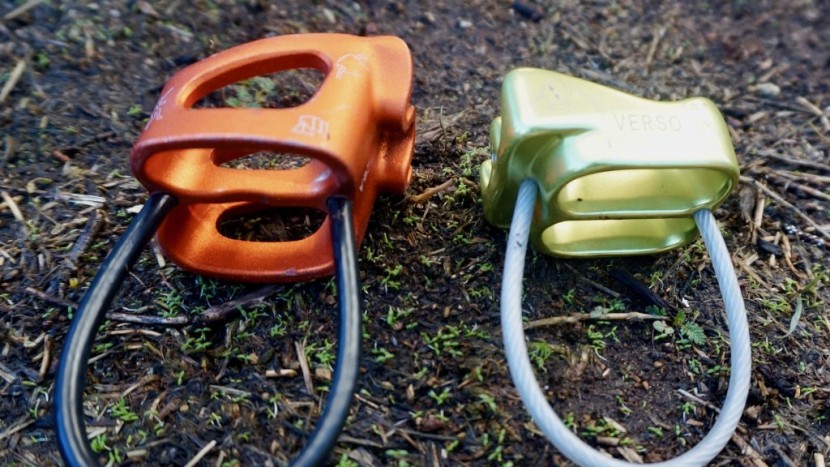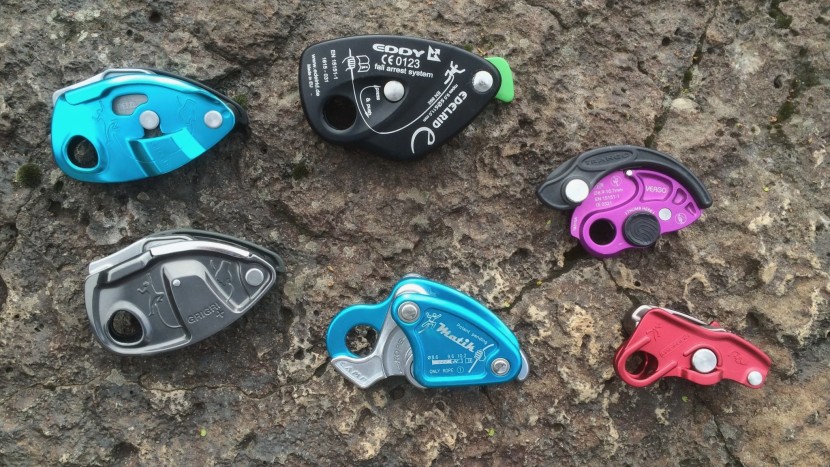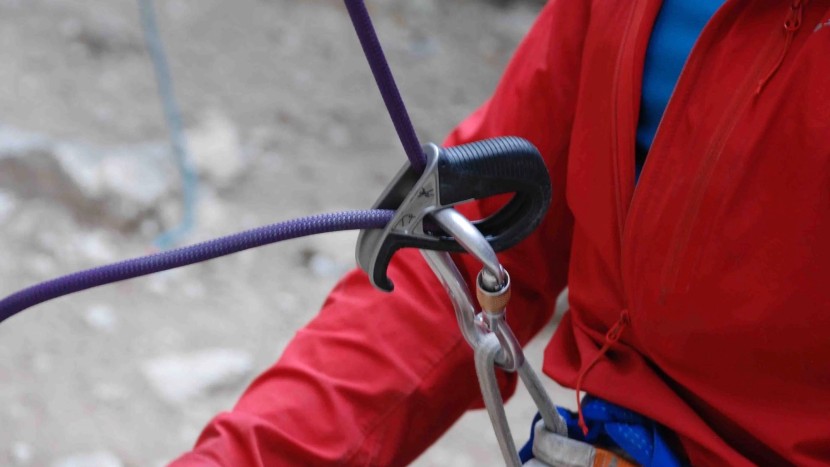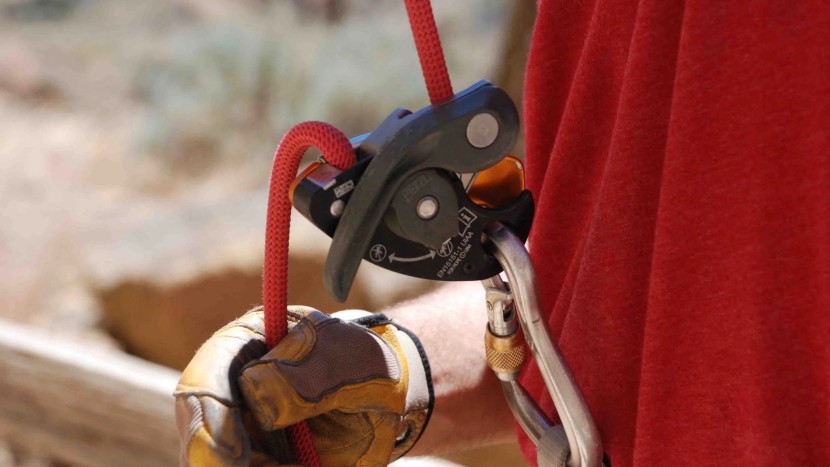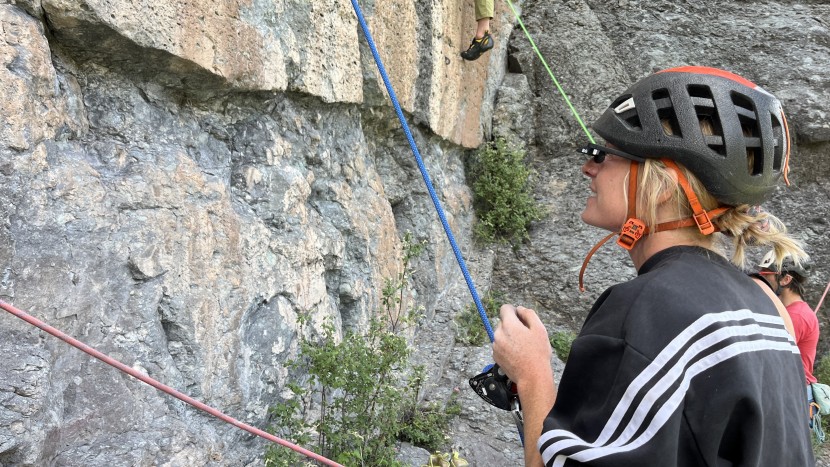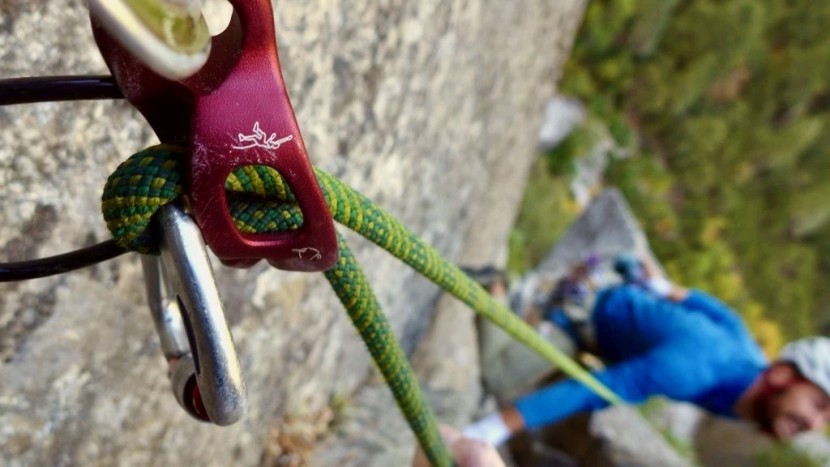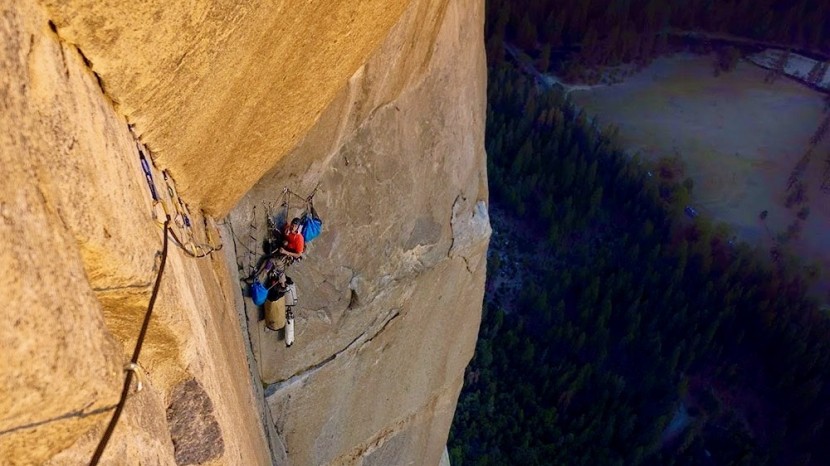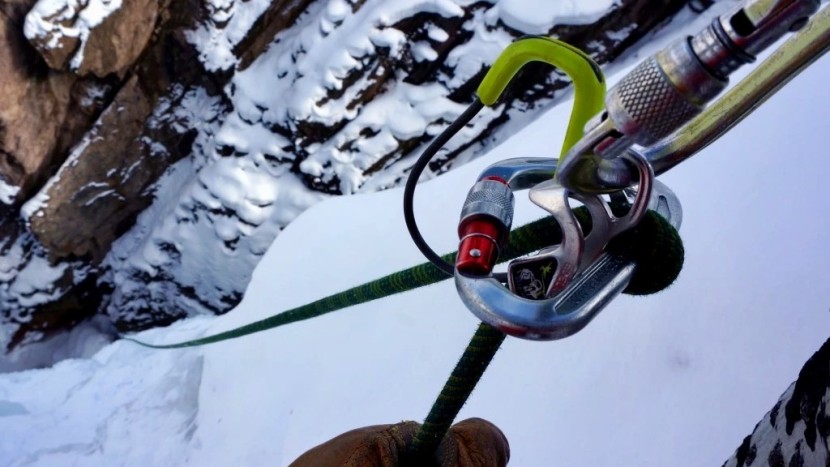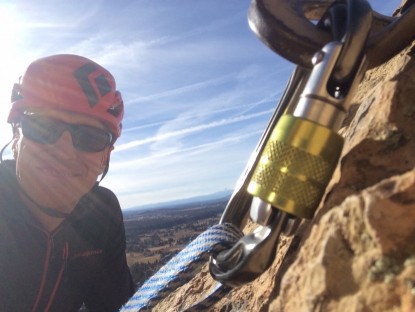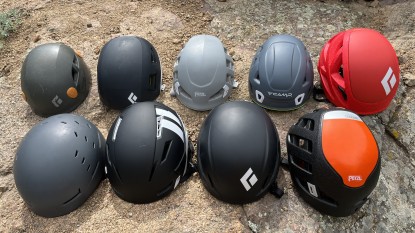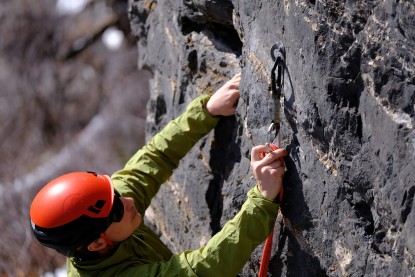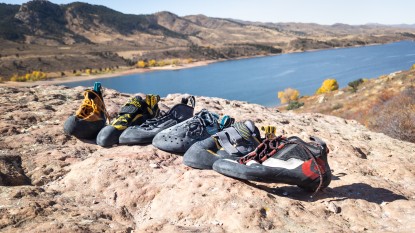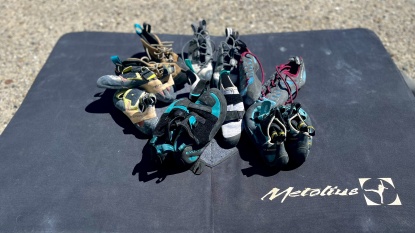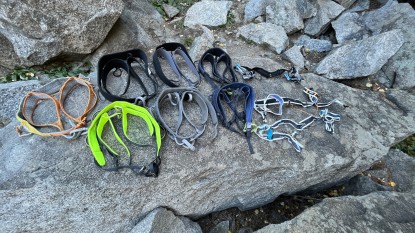Rock climbing has evolved dramatically over the years, from early ascents of peaks using static military-surplus ropes that broke easily to modern sport climbing where athletes fall sometimes hundreds of times before sending a route. Forces on the belayer have increased as climbers venture into, and fall off of, increasingly steep terrain. Holding these falls is a skill and an art, and a wide array of belay devices exist for the modern belayer to use, from simple tube-style devices that only kink the rope under load to spring-loaded devices that pinch the rope when weighted by the climber above or below. We compare the most popular choices in The Best Climbing Belay Device Review, and offer our thoughts on the suitability of each device for different types of belaying. In this article, we'll break down the different types of belay devices and explain how to choose the best belay device for your climbing style and preferences.
Types of Devices
There are three basic types of belay devices on the market: Tubes, Auto Blocking Tubes, and Assisted Braking Devices (ABDs). The latter can be broken down further into active ABDs and passive ABDs. All of these are designed to be used clipped directly to the belay loop of a harness with a locking carabiner when belaying the lead climber, or when belaying a top-roping climber. Many devices are also designed to be clipped directly to the anchor when belaying a following climber from above.
One belay device that everyone already has with them is the Munter Hitch, provided you know how to tie and use it, which we highly recommend learning. The Munter Hitch can be used to belay both a leader and second and rappel single or double ropes. Although it usually twists your ropes into a coiled mess, it provides an invaluable insurance policy in case you happen to drop your belay device, which can happen. Contact a mountain guide or climbing instructor to learn this handy technique.
Tubes
The most basic type of belay device on the market is the tube. Modern versions of these devices continue to look less and less like an actual tube, but they're all based on the concept of a tube-shaped slot, through which a bight of rope passes. Clip a carabiner to this bight, and the resulting kink produces the friction and braking power. One of the more popular early models was the Black Diamond ATC ("Air Traffic Controller"), and this acronym is sometimes used to refer to the entire category in North America. Although the original ATC is still available, many of today's best-performing tubes are asymmetrically shaped to give stronger braking force. They often include a toothed groove on one side that “bites” the brake strand of the rope when catching lead falls by adding surface area and thus friction. Most tubes include two slots to enable you to belay with half and twin ropes and rappel on two strands. Tube-style devices use the easiest and most basic belay techniques.
Auto Blocking Tubes
Auto-block devices, sometimes called 'guide mode' devices, are tube derivatives that include an extra hole to clip the device into an anchor in a vertical orientation. This allows the user to belay a climber directly off the anchor, providing a more secure and comfortable belay. They automatically lock by creating friction between the two ends of rope running over each other. The climber's end of the rope is oriented on top, and it pinches the brake strand of rope beneath it when the following climber falls or weights the rope.
Belaying in this manner is ideal for multi-pitch routes or any time a climber is being belayed from above. It's even possible to belay two following climbers at once. One of the belayer's hands has to maintain control of the brake strand, but the other hand is free to use for snacking, rehydrating, or snapping photos. Compared to tube-style devices, auto-blocking devices are a bit heavier, but way more versatile and secure. They can also be used like tube-style devices when belaying a leader or top-roping climber from below.
Assisted Braking Devices (ABDs)
A step up in sophistication, these devices use various mechanisms and designs to pinch the rope and automatically catch a fall. However, the automation and reliability of this catch are not fool-proof, so we refrain from using the popular but incorrect term, “auto-locking.” No matter the belay device, always keep your braking hand on the rope(s). ABDs are great because they reduce the grip strength required to hold a hanging partner, letting you save your energy for climbing instead of belaying.
However, if you allow their “automatic” braking capability to encourage bad belay techniques, they can become as dangerous as any other type of device. Their function also requires more complicated hand motions that can create their own accidents or inhibit precise rope management. Overall, the safety benefits of ABDs far outweigh their downsides, and we recommend all climbers, from beginners to experts, own and correctly use ABDs for most styles of climbing.
Passive ABDsWe separate today's ABD options into two categories: passive and active. Passive ABDs generate their braking power by pinching the rope between the device and a carabiner and are dependent on the position of the brake hand (classified under UIAA En 15151-2, "Manual braking devices"). These devices are lighter and less expensive than their active counterparts and are sometimes capable of double-strand rappels. However, their performance is highly dependent on the type of carabiner used.
Active ABDs
These devices generate their braking power with a variety of moving components inside the device itself. They're not dependent on the position of the brake hand or the carabiner used (classified under UIAA EN 15151-1, "braking devices with manually assisted locking"). These have become the most popular and common devices for sport climbing and single-pitch cragging. While they often require perfecting specific belay techniques, these techniques quickly become second nature. These devices are the heaviest and the most expensive, but they provide the greatest braking power, handle smoothly, and are our favorites for most belays.
The Right Device for the Climb
Not all belay devices are suitable for every type of climb. From the gym to the single-pitch crag to the high alpine, the variety of climbing styles is matched only by the variety of belay devices and techniques. For more detailed information and instruction, we recommend learning from a certified mountain guide.
The best way to approach a belay device purchase is by first deciding what types of climbing you intend to do. Here, we provide recommendations on what type of device to choose for each discipline of climbing.
Single Pitch Climbing, Cragging, and Gym Climbing
Whether you are climbing on rock or plastic, leading or top-roping, single pitch climbing is the foundation of the sport. For this discipline, we recommend an active assisted-braking device. Falling is common, resting on the rope is the norm, and lowering is almost always mandatory. Active ABDs do all of this with ease. Finally, weight and size can be overlooked in favor of convenience and toughness when you don't have far to walk.
Multi-Pitch Climbing
Climbing high above the ground isn't too different than single-pitch climbing, with the additional considerations that you'll have to get back to the ground somehow (either by rappelling or walking off), and the leader will have to belay the following climber(s) from above. For belaying the leader and the follower, most active ABDs get the job done. However, if your route involves a rappel descent, you'll need a tube-style or auto-blocking tube device to get down. Each climber should have a tube-style device for rappelling, and the lead climber may carry an auto-blocking tube device to belay the following climber rather than using an ABD.
A common combination of devices for a party of two climbers includes an active ABD for belaying the leader and an auto-blocking tube-style device for belaying the follower. When rappelling, the active ABD device is used by one climber to descend on a fixed single strand, then the second climber to rappel uses the auto-blocking device to rappel on two strands. This system requires advanced training, so seek qualified instruction.
Easy and Moderate Multi-Pitch Routes
On easy and moderate routes where lead falls aren't expected, each climber should carry an auto-blocking tube-style device. Optionally, the group could bring an active ABD to increase security for the lead belay.
Hard Free Climbing or Big Walls
For multi-pitch routes closer to your free climbing limit or for big wall aid routes, we prefer to take an active ABD along. This can give the leader greater confidence in the catch and save the belayer's hand strength after they make one. Prudent climbers will still bring along a dual-slotted tube device for rappelling. For these climbs, weight is a major consideration, so choose a device that is light and compact.
Alpine and Ice Climbing
Although belay techniques are usually the same from dry rock to alpine and ice environments, there are a few key differences that dictate our belay device choice. First, ice climbers and alpinists often climb with skinny twin or half ropes and rarely take falls, but the falls can be big. Second, ice and snow can make the rope more slippery. Third, ice and snow can get into the moving parts of active ABDs, making them less effective or defeating their braking functions altogether. So, we recommend passive ABDs for belaying the leader in the ice or alpine environment. If you are climbing with half or twin ropes, you'll need a passive ABD that can handle two ropes. Rappelling is also common, so be sure that the passive ABD of your choice is useful for rappelling or bring along a tube-style device or auto-blocking device as well.
In addition to belay devices, gloves and belay glasses significantly increase safety when belaying. Gloves help the belayer maintain control of the brake strand, especially in the event of a fall where the rope may start to move quickly and potentially burn ungloved hands. If the belayer's hand starts to burn, they'll let go of the rope.
Belay glasses help save the belayer from neck pain due to craning the neck upwards for the duration of the lead. When the belayer gets tired of looking up, they will start to look away from the leader, which can lead to a less attentive belay.Summary of Buying Recommendations
Nearly all climbers will use their active assisted-braking device the most, so start with an active ABD and learn how to use it well. If you graduate towards multi-pitch climbing, pick up and auto-blocking tube-style device. For more advanced belaying and alpine or ice climbing, a passive ABD should also be in your quiver.
Conclusion
Whatever device you choose, learn all you can about it. Read the manual; watch videos, and seek professional instruction. Take your belay device choice seriously, and your belay responsibilities even more so!

